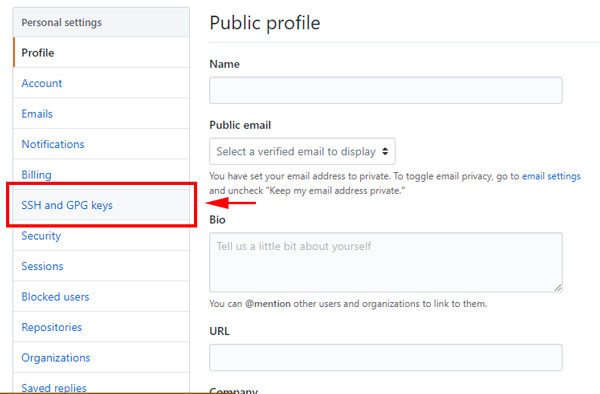This version of GitHub Enterprise will be discontinued on This version of GitHub Enterprise was discontinued on 2019-03-27. No patch releases will be made, even for critical security issues. For better performance, improved security, and new features, upgrade to the latest version of GitHub Enterprise.For help with the upgrade, contact GitHub Enterprise support.
- Enter Passphrase For Ssh Key
- Enter Passphrase For Key Mac Git
- Windows Enter Passphrase For Key
- Public Key Passphrase
- Github Enter Passphrase For Key

Enter passphrase (empty for no passphrase): It is strongly recommended to add a passphrase to your private key. Without a passphrase to protect the key file, anyone with the file can use it to sign in to any server that has the corresponding public key. Protecting a Private Key. The purpose of the passphrase is usually to encrypt the private key. This makes the key file by itself useless to an attacker. It is not uncommon for files to leak from backups or decommissioned hardware, and hackers commonly exfiltrate files from compromised systems. To use an encrypted key, the passphrase is also needed. If the archive is encrypted with a passphrase, you will be prompted to enter the passphrase. If the archive is encrypted with the public key of your digital certificate, it should open automatically. The Mac Keychain Access application manages certificates and their keys for you. On OSX, the native ssh-add client has a special argument to save the private key's passphrase in the OSX keychain, which means that your normal login will unlock it for use with ssh. On OSX Sierra and later, you also need to configure SSH to always use the keychain (see Step 2 below). Alternatively you can use a key without a passphrase, but if you prefer the security that's certainly. For convenience, the optimal method is a combination of the answers of jmtd and Faheem. Using ssh-agent alone means that a new instance of ssh-agent needs to be created for every new terminal you open.keychain when initialized will ask for the passphrase for the private key(s) and store it. That way your private key is password protected but you won't have to enter your password over and over.
You can secure your SSH keys and configure an authentication agent so that you won't have to reenter your passphrase every time you use your SSH keys.
With SSH keys, if someone gains access to your computer, they also gain access to every system that uses that key. To add an extra layer of security, you can add a passphrase to your SSH key. You can use ssh-agent to securely save your passphrase so you don't have to reenter it.
Enter Passphrase For Ssh Key
Adding or changing a passphrase
Apple desktop computers. You can change the passphrase for an existing private key without regenerating the keypair by typing the following command:
Enter Passphrase For Key Mac Git
If your key already has a passphrase, you will be prompted to enter it before you can change to a new passphrase.
Auto-launching ssh-agent on Git for Windows
Windows Enter Passphrase For Key
If you're using Git Shell that's installed with GitHub Desktop, you don't need to follow these steps. GitHub Desktop automatically launches ssh-agent for you.
Otherwise, follow these steps to run ssh-agent automatically when you open bash or Git shell. Copy the following lines and paste them into your ~/.profile or ~/.bashrc file in Git shell:
If your private key is not stored in one of the default locations (~/.ssh/id_rsa or ~/.ssh/id_dsa), you'll need to tell your SSH authentication agent where to find it. To add your key to ssh-agent, type ssh-add ~/path/to/my_key. For more information, see 'Generating a new SSH key and adding it to the ssh-agent'
Tip: If you want ssh-agent to forget your key after some time, you can configure it to do so by running ssh-add -t <seconds>.
Now, when you first run Git Bash, you are prompted for your passphrase:
The ssh-agent process will continue to run until you log out, shut down your computer, or kill the process.
Saving your passphrase in the keychain
On OS X Leopard through OS X El Capitan, these default private key files are handled automatically:
.ssh/id_rsa.ssh/id_dsa.ssh/identity
The first time you use your key, you will be prompted to enter your passphrase. If you choose to save the passphrase with your keychain, you won't have to enter it again.
Public Key Passphrase
Otherwise, you can store your passphrase in the keychain when you add your key to the ssh-agent. For more information, see 'Adding your SSH key to the ssh-agent.'
Further reading
Github Enter Passphrase For Key
- 'About SSH'
